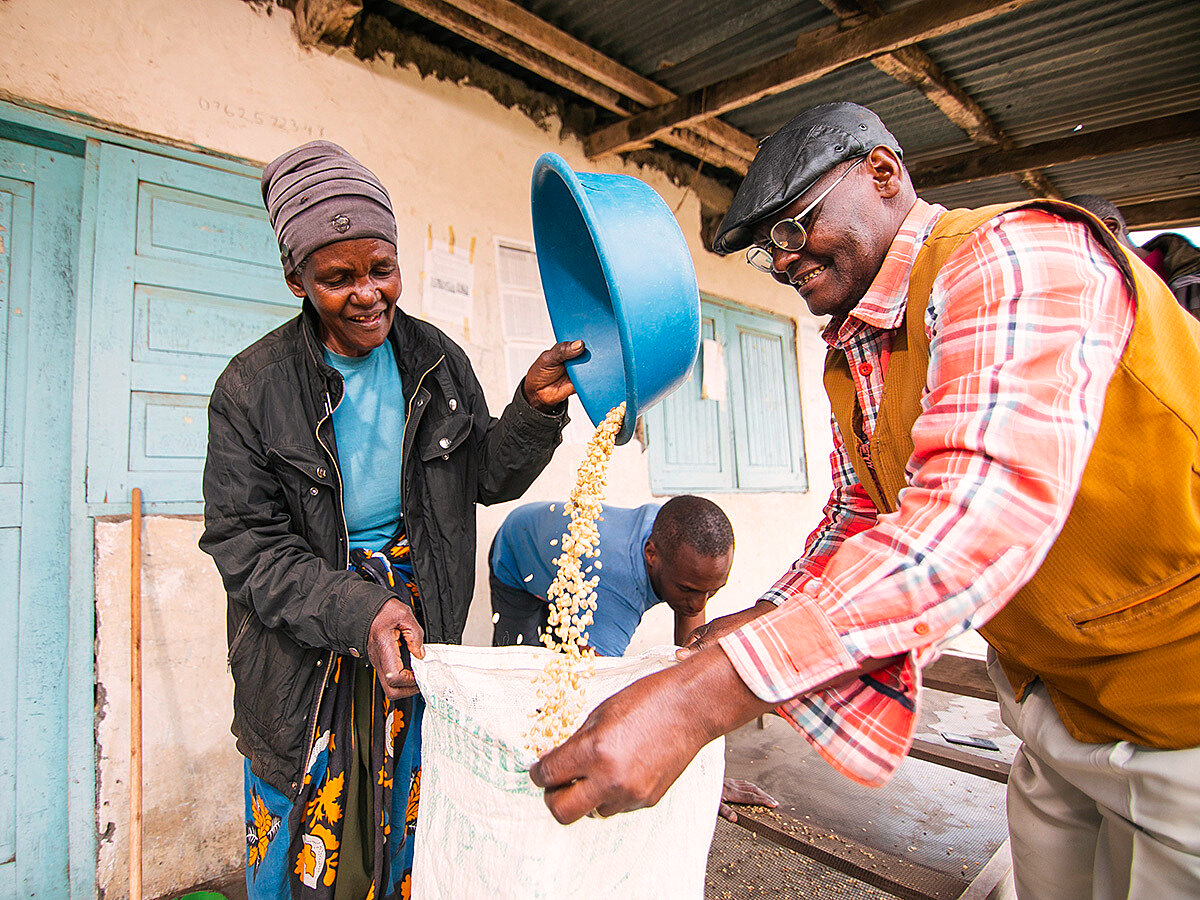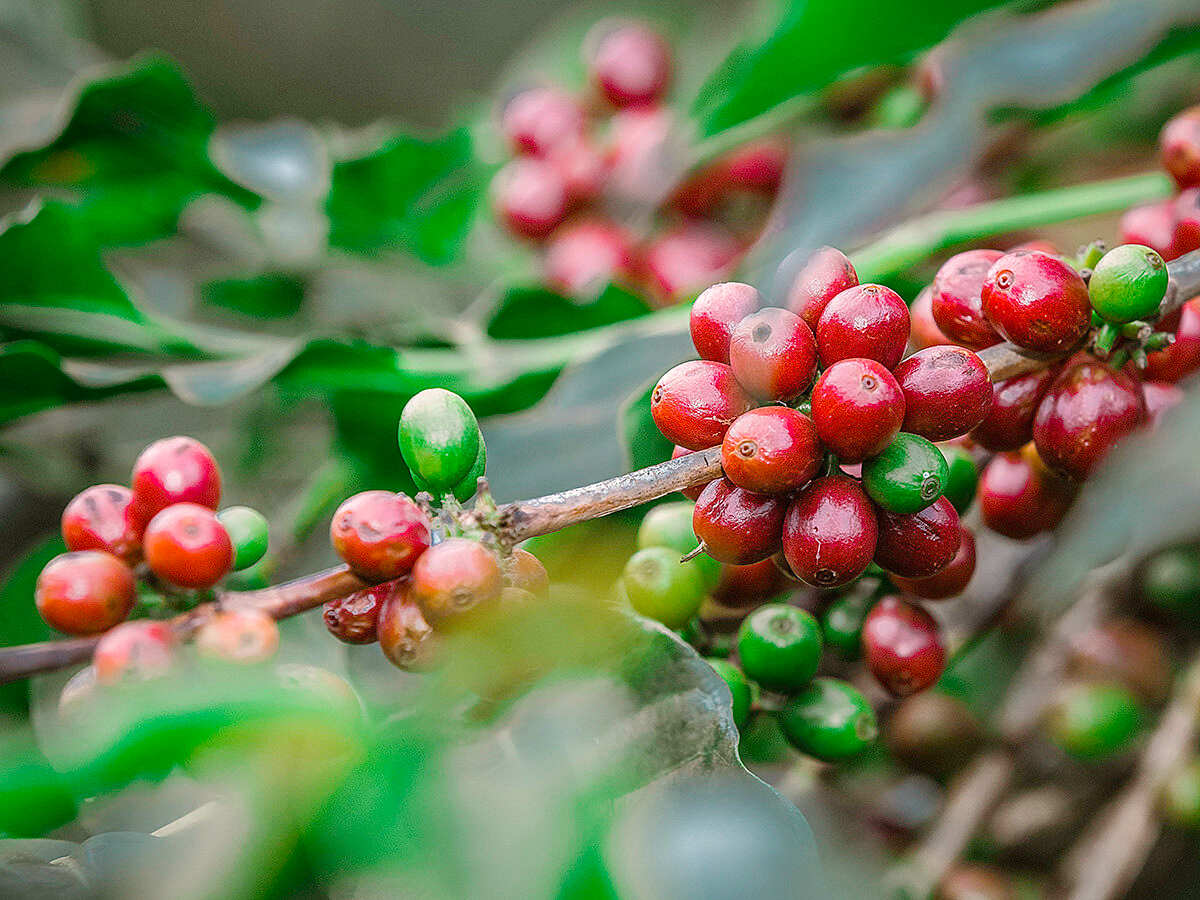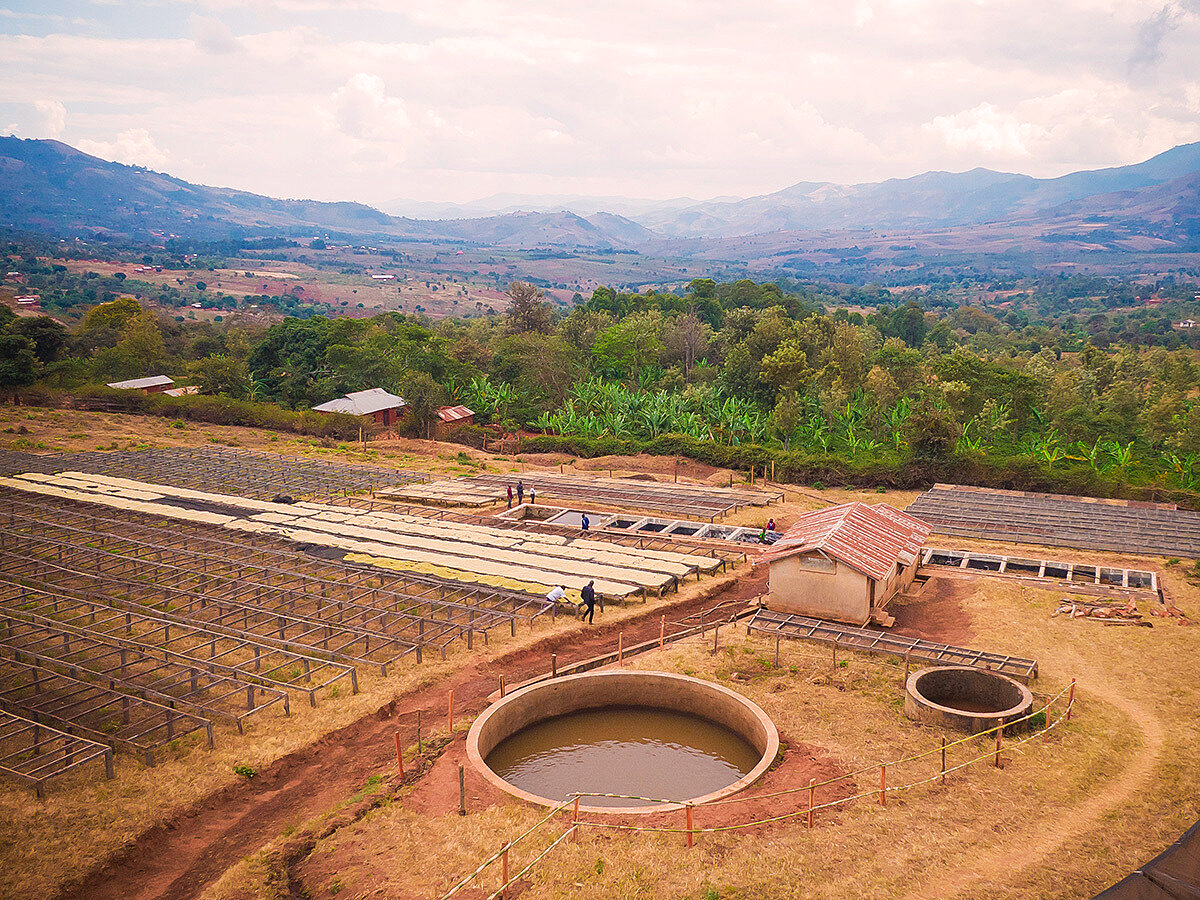

















Tanzania
Cup Notes: Grape, Apple, Maple Syrup, Hazelnut
A new washed coffee from Tanzania, bursting with juicy grape notes and a bright, delicately balanced acidity reminiscent of crisp green apple. Lightly tart with a sweet finish and a round body, it’s a lively, elegant cup that remains effortlessly approachable.
Suggested for espresso and filter
when we roast
We freshly roast to order all coffees on Monday, Wednesday and Friday (excluding national holidays), and ship the same day! Cut-off time is 11:59pm (UTC+1) of the day before the roast day. *We only ship whole beans*
Founded in June 2017 with just 50 members, Hezya AMCOS quickly established itself as a strong cooperative thanks to effective leadership and success in the direct export channel. Efficient premium distribution further contributed to its rapid growth, reaching 295 members within its first five years.
Through the cooperative, smallholder farmers from Hezya and the nearby villages of Haraka and Izumbi—each cultivating less than one hectare on average—gain access to agro-inputs, micro-loans, and training programs. These initiatives emphasize generational renewal and gender inclusion, supporting both economic stability and the advancement of specialty coffee production.
A key milestone in their development was the construction of a central processing unit (CPU) for the 2022/23 harvest, made possible through a loan from our export partners at Taylor Winch. By delivering cherry to the wet mill, farmers ensure consistent quality control through to the drying phase, earning the cooperative and its members additional premiums.

BOURBON
Bourbon is one of the most culturally and genetically important Coffea arabica varieties in the world, known for excellent cup quality at the highest altitudes. It is one of the two main cultivars, along with Typica, from which many other varieties have been bred. Historical records indicate that Bourbon was taken from the coffee forests of Southwestern Ethiopia to Yemen, where it was first cultivated; recent genetic studies have confirmed this origin. The variety was later introduced to Réunion, formerly known as Bourbon Island before 1789, and from there brought by the French to mainland Africa and Latin America. Bourbon grows best at elevations between 1,100 and 2,000 meters above sea level and typically yields 20–30% more than Typica. It has a commercially viable level of production and a suitable growth habit but is generally susceptible to diseases and pests, including coffee leaf rust, as noted by World Coffee Research. In the early 1900s, Bourbon arrived in Honduras, where it is now commonly grown in high-altitude regions such as Copán, Marcala-Montecillos, and Agalta. It produces medium-sized beans and is highly regarded among specialty coffee producers for its potential to deliver high-quality cups.
KENT
The Kent variety is one of the earliest coffee cultivars selected in India for its resistance to coffee leaf rust – the most devastating disease affecting Arabica – and its good cup quality. It is a selection derived from Typica, named after the “Kent Estate” where it was first identified in the 1920s. You can think of Kent as a “diligent descendant” of Typica: it retains Typica’s sweetness and clarity, but with added resilience – like a noble lineage that has developed armour against adversity.
In the cup, Kent typically offers a balanced profile, with subtle sweetness, medium body, and moderate acidity, often revealing floral or ripe fruit notes. It is especially valued in regions such as India and Kenya for its combination of sensory quality and agronomic resilience.

Many AMCOS operate Coffee Processing Units (CPUs) where cherries from member farmers are handled with care to ensure quality. Freshly harvested cherries are delivered the same day to the CPU, where they are sorted and pulped.
The beans then undergo fermentation in tanks for up to 72 hours, a critical step that enhances flavour clarity. After fermentation, the beans are washed through channels using wooden shunts. During this process, the denser, higher-quality beans sink, while lighter, lower-grade beans float—allowing for effective separation by density.
Each grade is then sun-dried on raised beds for approximately 10 days, ensuring even drying and preserving the beans’ quality for export.
